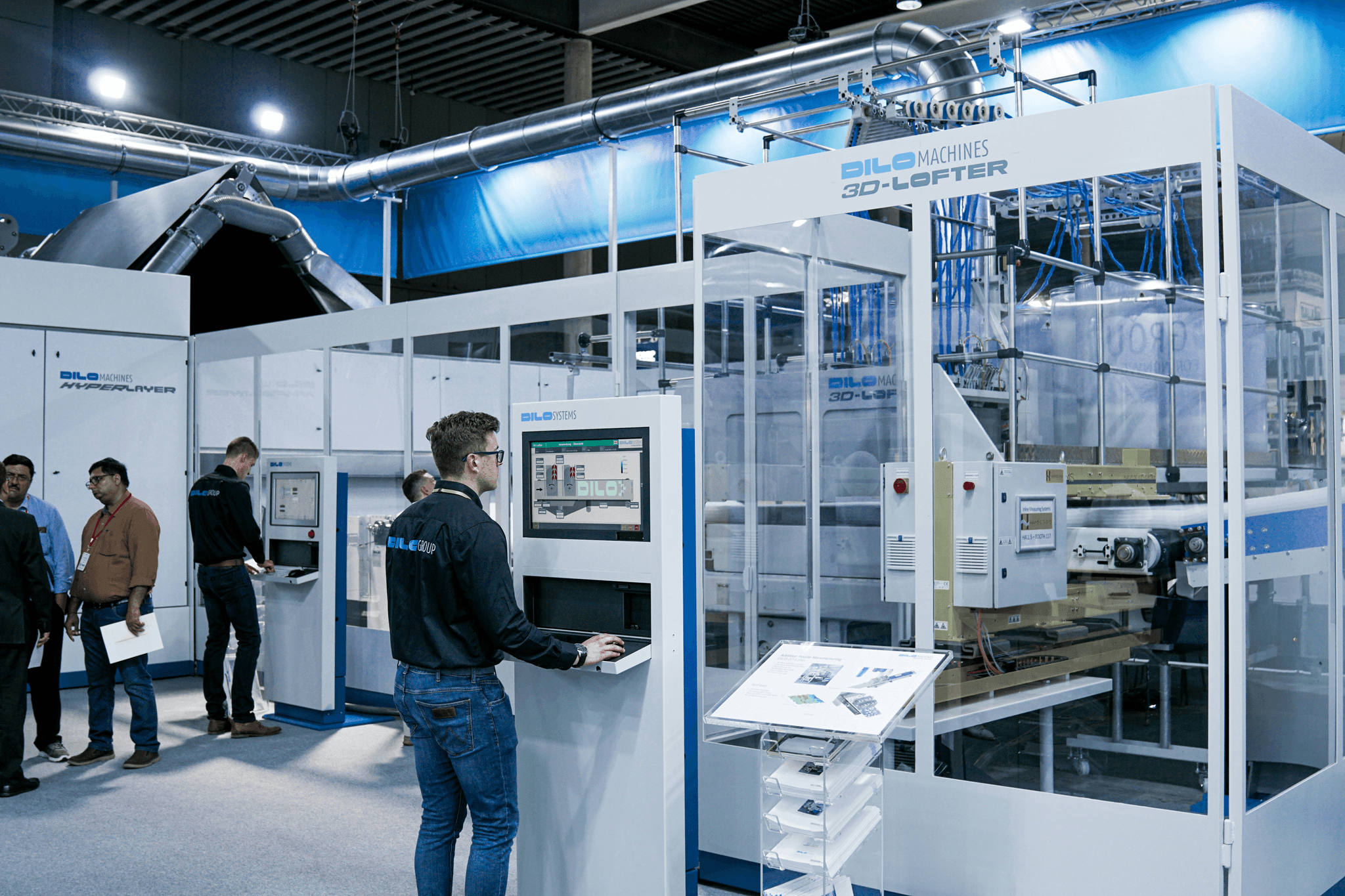Introduction

In today's fast-paced marketplace, the importance of quality assurance cannot be overstated. Quality Assurance Inspection serves as the backbone of product reliability, ensuring that what reaches consumers meets stringent standards. With the stakes higher than ever, companies must prioritize quality assurance to maintain their reputation and customer trust.
Why Quality Assurance Matters
Quality assurance is not just a checkbox on a to-do list; it’s an essential component of any successful business strategy. By implementing robust QA processes, organizations can minimize defects and enhance customer satisfaction, leading to increased loyalty and sales. In a world where consumers are more discerning than ever, investing in quality assurance is synonymous with investing in your brand's future.
The Risk of Trusting Suppliers Blindly
While suppliers play a vital role in production, placing blind trust in them can lead to disastrous outcomes. Many businesses overlook the potential pitfalls associated with relying solely on supplier QA practices, which may not align with their own standards for quality and assurance. This misplaced trust can result in compromised products that ultimately damage both reputation and bottom line.
Understanding the Limits of Supplier QA
It's crucial to recognize that supplier QA is often limited by various factors including bias and lack of understanding of your specific requirements. Suppliers may prioritize their interests over yours, leading to inadequate quality assurance measures that fail to meet expectations. Understanding these limitations enables businesses to develop a comprehensive approach that includes independent verification through Quality Assurance Inspection.
Supplier Bias in Quality Assurance Inspection

Quality Assurance Inspection is a critical aspect of maintaining product integrity and ensuring that standards are met. However, one must recognize the inherent biases that can arise when suppliers are tasked with their own quality assurance processes. This section delves into the conflict of interest dilemma, explores how suppliers' interests can compromise quality, and presents real-world examples of QA failures that highlight these issues.
The Conflict of Interest Dilemma
The conflict of interest dilemma is a significant concern in the realm of quality assurance. When suppliers are responsible for their own QA quality checks, there’s an inherent risk that they may prioritize their financial interests over adherence to established quality standards. This duality creates an environment where the objectivity of quality assurance and quality can be compromised, leading to potentially disastrous outcomes for manufacturers relying on these inspections.
How Suppliers' Interests Can Compromise Quality
Suppliers often face pressure to minimize costs and maximize profits, which can lead them to cut corners in their QA processes. When profit margins are at stake, the temptation to overlook minor defects or misinterpret specifications can become overwhelming. Consequently, this compromise in quality assurance not only affects the immediate product but also tarnishes long-term relationships between manufacturers and customers due to reliability concerns.
Real-World Examples of Supplier QA Failures
Real-world examples abound where supplier bias has led to catastrophic failures in quality assurance and quality control measures. One notable case involved a major electronics manufacturer that sourced components from a supplier who assured them of compliance with stringent safety standards—only for those components to fail during testing due to unreported defects. Such incidents underscore the necessity for independent oversight in Quality Assurance Inspection processes; without it, companies risk severe financial loss and reputational damage.
Inadequate Knowledge of Your Standards

In the realm of Quality Assurance Inspection, understanding the nuances of your own standards is crucial. Many businesses operate with custom specifications that may not align seamlessly with industry norms. When suppliers lack comprehensive knowledge of these standards, it can lead to significant quality assurance failures.
Custom Specifications and Industry Standards
Custom specifications are often tailored to meet unique business needs, which can differ greatly from general industry standards. This disparity can create a gap in understanding for suppliers who may be accustomed to more generic quality assurance protocols. As a result, without proper training and information on your specific requirements, suppliers might deliver products that fall short of your expectations for quality and assurance.
How Suppliers May Misinterpret Requirements
Misinterpretation of requirements is a common pitfall in supplier relationships, especially when clear guidelines are not provided upfront. Suppliers may assume they understand your needs based on their past experiences or existing templates, leading to deviations from what you actually require in terms of quality assurance quality. This misalignment not only jeopardizes product integrity but also undermines the entire QA quality assurance process.
The Importance of Clear Communication in QA
Clear communication is the bedrock of effective quality assurance and quality management practices. Establishing open lines between you and your suppliers ensures that everyone is on the same page regarding expectations and standards. By fostering an environment where questions are encouraged and feedback is welcomed, you significantly reduce the risk of misunderstandings that could compromise your product's quality.
Quality Assurance Inspection: A Third-Party Solution

In the realm of quality assurance, relying solely on suppliers for quality checks can be a risky endeavor. This is where independent quality audits come into play, offering a fresh perspective and unbiased assessment of products and processes. By integrating third-party inspections into your quality assurance strategy, you can significantly enhance the reliability and effectiveness of your QA quality measures.
The Benefits of Independent Quality Audits
Independent quality audits provide a layer of objectivity that internal inspections often lack. With third-party auditors, you gain access to specialized expertise that can uncover issues that may be overlooked by suppliers who are too close to the process. These audits not only bolster confidence in your products but also help identify areas for improvement within your supply chain, ensuring that both quality assurance and quality standards are consistently met.
Moreover, independent audits promote accountability among suppliers as they know their processes will be scrutinized by an external party. This added pressure often leads to improved compliance with established QA standards and fosters a culture of continuous improvement. In essence, incorporating independent audits into your quality assurance framework not only enhances product integrity but also strengthens supplier relationships through transparency.
How China Inspection Pro Ensures Quality Excellence
China Inspection Pro stands out in the field of quality assurance inspection by combining rigorous methodologies with industry expertise. Their approach involves meticulous planning and execution to ensure that every aspect of the QA process is covered comprehensively. By leveraging advanced technology and experienced inspectors, they guarantee that each product meets both client specifications and industry standards.
What sets China Inspection Pro apart is their commitment to understanding client needs deeply before conducting any inspections. They tailor their QA services to align perfectly with specific requirements, ensuring no detail is missed during the evaluation process. This dedication to customization not only enhances the overall effectiveness of their inspections but also reinforces trust in their ability to deliver exceptional quality assurance results.
Delivering Comprehensive Reports for Informed Decisions
One of the key advantages of engaging a third-party inspection service like China Inspection Pro is the detailed reporting provided after each audit or inspection session. These comprehensive reports serve as invaluable resources for businesses looking to make informed decisions regarding their supply chain management and product development strategies. By presenting clear data on compliance levels, potential risks, and areas needing attention, these reports help companies refine their approach to both quality assurance and overall operational efficiency.
Furthermore, these reports facilitate transparent communication between stakeholders within an organization—ensuring everyone from management to production teams understands where improvements are necessary or where successes should be celebrated. The clarity offered by such detailed documentation empowers businesses to elevate their standards continuously while maintaining high levels of accountability throughout all stages of production and distribution processes.
Building a Culture of Quality and Assurance

Creating a robust culture around quality and assurance is not just about implementing processes; it's about fostering an environment where every team member feels responsible for quality assurance. When your team is engaged in quality initiatives, they become more invested in the outcomes, leading to higher standards of qa quality. This collective ownership can significantly enhance the overall effectiveness of your quality assurance efforts.
Engaging Your Team in Quality Initiatives
Engaging your team in quality initiatives is crucial for cultivating a proactive mindset towards quality assurance. When employees understand that their contributions directly impact the qa assurance process, they are more likely to take pride in their work and uphold high standards of quality and assurance. Regular brainstorming sessions, workshops, or even fun competitions can motivate staff to think creatively about how to improve qa quality assurance practices within the organization.
Moreover, when teams collaborate on setting and achieving quality goals, it creates a sense of unity that strengthens commitment to maintaining high-quality standards. This engagement fosters open communication channels where team members feel comfortable discussing challenges related to supplier QA or any other aspect of quality assurance inspection. Ultimately, this collaborative spirit translates into tangible improvements in overall product or service delivery.
How Training Improves Quality Assurance Quality
Training plays a pivotal role in enhancing the effectiveness of qa quality processes by equipping employees with essential skills and knowledge needed for effective execution of their roles. By offering targeted training programs focused on industry standards and best practices for quality assurance inspection, organizations can ensure that all team members are aligned with what constitutes high-quality outcomes. Well-informed employees are less likely to misinterpret requirements set by suppliers, thereby minimizing errors associated with inadequate knowledge.
Furthermore, ongoing training helps keep teams updated on new technologies and methodologies related to qa assurance practices that could further improve efficiency and effectiveness. For instance, incorporating real-world scenarios into training modules allows employees to apply theoretical knowledge practically while understanding its relevance within their daily operations. As a result, this continuous learning approach leads not only to improved individual performance but also enhances the overall culture surrounding qa quality excellence within the organization.
Fostering Accountability Through Transparent Processes
Transparency is essential when building a culture centered around accountability in your organization's approach to qa quality assurance. Establishing clear processes ensures everyone knows their roles and responsibilities concerning both internal QA measures as well as interactions with suppliers during inspections or audits. When people understand how their actions affect overall outcomes—especially regarding supplier relationships—their commitment toward maintaining high-quality standards increases significantly.
Additionally, implementing regular feedback loops allows teams to assess performance continuously while identifying areas needing improvement or adjustment along the way—ultimately reinforcing accountability among all involved parties during each phase of production or service delivery cycles pertaining specifically toward ensuring uncompromised levels of excellence throughout every stage associated with supplier QA inspections too! Creating this environment encourages individuals at all levels within an organization not only takes ownership over personal contributions but also supports collective efforts aimed at achieving optimal results through shared responsibility across departments involved directly related back again towards fostering continual enhancements made possible via effective utilization techniques such as these mentioned here today!
Conclusion

In the realm of manufacturing and supply chain management, quality assurance is not merely a checkbox on a list; it is a shared responsibility that involves every stakeholder. From suppliers to end-users, everyone plays a role in ensuring that standards are met and maintained. By recognizing this collective duty, organizations can foster an environment where quality assurance becomes ingrained in the corporate culture.
Quality Assurance: A Shared Responsibility
Quality assurance is not just the responsibility of the QA department; it requires collaboration across various teams and functions. When everyone understands their role in maintaining quality—whether through rigorous inspections or clear communication—companies can better safeguard against potential failures. This shared accountability leads to enhanced quality and assurance, ultimately benefiting the entire organization.
The Value of Reliable QA Quality Assurance
Reliable QA quality assurance practices are essential for building trust with customers and stakeholders alike. When companies invest in thorough quality assurance inspections, they not only reduce risks but also enhance their reputation in the marketplace. The value derived from consistent and dependable QA processes cannot be overstated; it translates into customer satisfaction, repeat business, and long-term success.
Elevate Your Standards for Optimal Results
To achieve optimal results, organizations must continuously elevate their standards for quality assurance and quality control processes. This means embracing innovative inspection techniques, staying updated on industry best practices, and fostering an environment where feedback is welcomed and acted upon. By striving for excellence in QA quality assurance practices, businesses can set themselves apart from competitors while delivering superior products to their customers.
